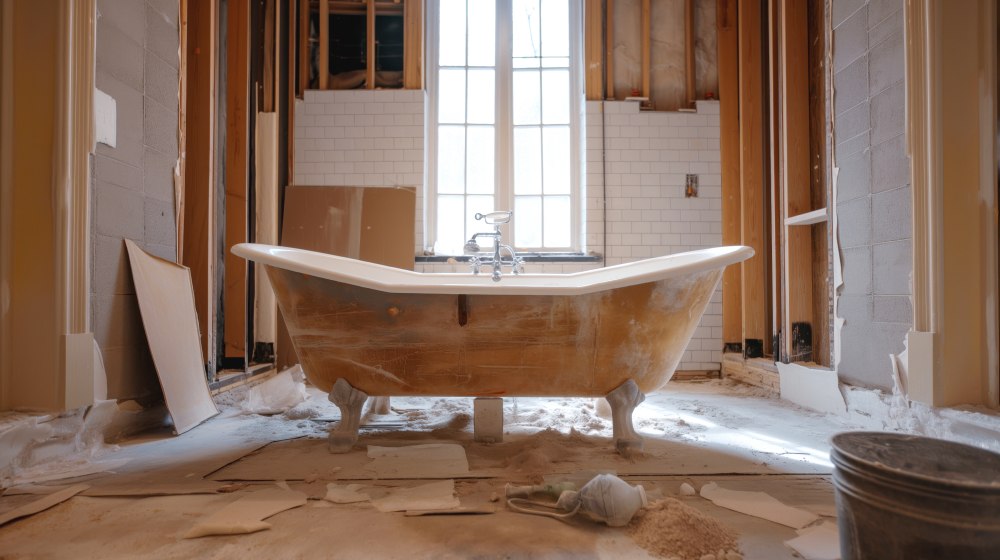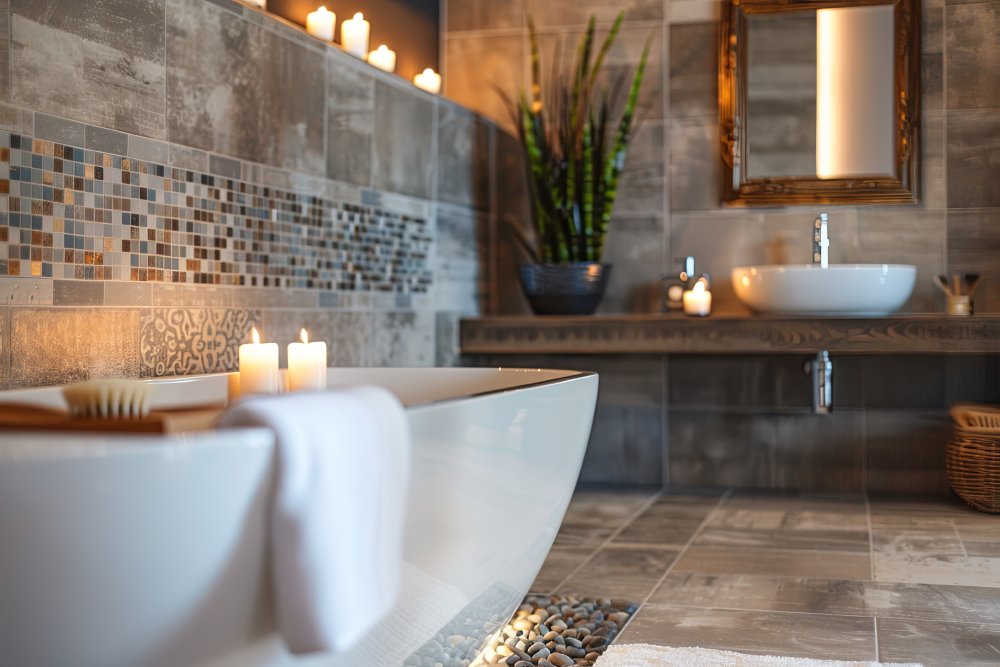As awareness about environmental issues grows, more homeowners are seeking ways to make their homes more sustainable. One of the best places to start is the bathroom, a space where water consumption and energy usage are typically high. Eco-friendly bathroom upgrades can reduce your environmental footprint, save money on utility bills, and create a healthier living environment. This article explores various sustainable choices for your bathroom that can make a significant impact.
1. Water-Efficient Fixtures
Overview: Water efficiency is a critical aspect of creating an eco-friendly bathroom. Installing water-saving fixtures can significantly reduce water consumption without compromising performance.Key Upgrades:
-
Low-Flow Showerheads:
- Benefits: Low-flow showerheads use less water per minute compared to traditional ones, reducing water usage while maintaining good pressure.
- Technology: Modern low-flow showerheads often use air infusion or flow restrictors to enhance water pressure.
-
Dual-Flush Toilets:
- Benefits: Dual-flush toilets offer two flush options – a low-volume flush for liquid waste and a higher-volume flush for solid waste, conserving water with each use.
- Technology: Many dual-flush toilets meet EPA WaterSense criteria, using 1.28 gallons per flush or less.
-
Low-Flow Faucets and Aerators:
- Benefits: Installing low-flow faucets and aerators can cut water flow by up to 50%, reducing water use without affecting functionality.
- Technology: Aerators mix air with water, maintaining pressure while using less water.
- Look for WaterSense Labels: Fixtures with the WaterSense label meet EPA standards for water efficiency and performance.
- Regular Maintenance: Regularly check for leaks and repair them promptly to prevent water waste.
2. Energy-Efficient Lighting
Overview: Lighting is an essential part of any bathroom, and choosing energy-efficient options can significantly reduce energy consumption.Key Upgrades:
-
LED Lighting:
- Benefits: LED bulbs use up to 80% less energy than incandescent bulbs and last up to 25 times longer.
- Technology: LEDs are available in various color temperatures and brightness levels, providing flexibility in creating the desired ambiance.
-
Motion Sensor Lights:
- Benefits: Motion sensor lights turn on automatically when someone enters the bathroom and turn off when the room is unoccupied, reducing energy waste.
- Technology: These lights use infrared sensors to detect movement and adjust lighting accordingly.
-
Natural Lighting:
- Benefits: Maximizing natural light reduces the need for artificial lighting, saving energy and creating a brighter, more inviting space.
- Technology: Skylights, solar tubes, and strategically placed windows can enhance natural lighting in the bathroom.
- Use Dimmer Switches: Install dimmer switches to adjust lighting levels based on needs and reduce energy consumption.
- Regularly Clean Fixtures: Keep light fixtures clean to ensure they operate efficiently and provide maximum illumination.
3. Sustainable Materials
Overview: Choosing sustainable materials for your bathroom can reduce environmental impact and create a healthier indoor environment.Key Upgrades:
-
Recycled and Reclaimed Materials:
- Benefits: Using recycled or reclaimed materials for countertops, flooring, and cabinetry reduces waste and conserves natural resources.
- Examples: Recycled glass countertops, reclaimed wood vanities, and tiles made from recycled materials.
-
Bamboo:
- Benefits: Bamboo is a fast-growing, renewable resource that is durable and resistant to moisture, making it ideal for bathroom use.
- Applications: Bamboo flooring, cabinetry, and accessories.
-
Natural Stone:
- Benefits: Natural stone, such as granite and marble, is durable and long-lasting. It also provides a timeless, elegant look.
- Considerations: Choose locally sourced stone to reduce transportation-related emissions.
- Research Suppliers: Choose suppliers committed to sustainable practices and ethical sourcing.
- Certifications: Look for certifications like FSC (Forest Stewardship Council) for wood products and GreenGuard for low-emission materials.
Join HICP Homeowner’s Alliance
Connect with experts, get special discounts and enjoy member benefits
4. Eco-Friendly Paints and Finishes
Overview: Traditional paints and finishes can release volatile organic compounds (VOCs) into the air, contributing to indoor air pollution. Eco-friendly alternatives are safer and healthier.Key Upgrades:
-
Low-VOC and Zero-VOC Paints:
- Benefits: These paints release fewer harmful chemicals, improving indoor air quality and reducing health risks.
- Technology: Made with water-based formulas and natural pigments.
-
Natural Finishes:
- Benefits: Natural oils and waxes provide a durable finish for wood surfaces without harmful emissions.
- Examples: Tung oil, linseed oil, and beeswax.
- Proper Ventilation: Ensure good ventilation when painting or applying finishes to minimize exposure to any fumes.
- Certified Products: Look for products certified by organizations like GreenGuard or Green Seal.
5. Efficient Water Heating
Overview: Water heating accounts for a significant portion of energy use in the bathroom. Upgrading to energy-efficient water heaters can reduce energy consumption and costs.Key Upgrades:
-
Tankless Water Heaters:
- Benefits: Tankless water heaters provide hot water on demand, eliminating the energy waste associated with storing hot water.
- Technology: These units heat water as it flows through the system, providing continuous hot water.
-
Solar Water Heaters:
- Benefits: Solar water heaters use renewable energy from the sun to heat water, reducing reliance on fossil fuels.
- Technology: Systems include solar collectors, storage tanks, and a backup heating system for cloudy days.
-
Heat Pump Water Heaters:
- Benefits: Heat pump water heaters use electricity to move heat from the air or ground to heat water, making them highly efficient.
- Technology: These systems can be up to three times more energy-efficient than conventional electric water heaters.
- Insulate Pipes: Insulate hot water pipes to reduce heat loss and improve efficiency.
- Reduce Temperature: Set your water heater to 120°F (49°C) to save energy and prevent scalding.
6. Water-Saving Toilets
Overview: Toilets are one of the largest consumers of water in the bathroom. Upgrading to water-saving models can significantly reduce water usage.Key Upgrades:
-
Dual-Flush Toilets:
- Benefits: Offer two flush options, allowing users to choose a lower volume flush for liquid waste and a higher volume flush for solid waste.
- Technology: Modern dual-flush toilets are designed to be highly efficient and effective.
-
Composting Toilets:
- Benefits: Composting toilets use little to no water, turning waste into compost that can be used as fertilizer.
- Technology: These systems use natural processes to break down waste, eliminating the need for water and reducing waste.
-
Pressure-Assisted Toilets:
- Benefits: Use pressurized air to provide a powerful flush with less water.
- Technology: These toilets are more efficient than traditional gravity-fed toilets.
- Regular Maintenance: Keep toilets well-maintained to ensure efficient operation and prevent leaks.
- Consider Retrofitting: Retrofit existing toilets with water-saving devices like dual-flush converters or fill cycle diverters.
7. Green Cleaning Products
Overview: Traditional cleaning products can contain harsh chemicals that are harmful to the environment and human health. Eco-friendly alternatives are safer and just as effective.Key Upgrades:
-
Natural Cleaners:
- Benefits: Made from natural ingredients like vinegar, baking soda, and essential oils, these cleaners are non-toxic and biodegradable.
- Examples: All-purpose cleaners, glass cleaners, and bathroom-specific products.
-
Refillable Products:
- Benefits: Reduce plastic waste by using refillable cleaning product containers.
- Technology: Concentrated formulas that can be diluted with water for multiple uses.
- DIY Cleaners: Consider making your own cleaning solutions using simple, natural ingredients.
- Proper Disposal: Dispose of traditional cleaning products responsibly to prevent environmental contamination.
8. Smart Technology for Sustainability
Overview: Smart technology can enhance the sustainability of your bathroom by optimizing water and energy usage.Key Upgrades:
-
Smart Shower Systems:
- Benefits: Allow you to control water temperature and flow via a smartphone app, reducing water waste.
- Technology: Some systems provide usage data to help you monitor and reduce consumption.
-
Smart Faucets:
- Benefits: Touchless operation reduces water waste and improves hygiene.
- Technology: Some models feature timers or usage monitoring.
-
Smart Thermostats:
- Benefits: Control bathroom heating systems efficiently, saving energy.
- Technology: Can be programmed to heat the bathroom only when needed.
- Integration: Ensure smart devices are compatible with each other for seamless operation.
- User Training: Familiarize yourself with the technology to maximize its benefits.
Eco-friendly bathroom upgrades not only help protect the environment but also create a healthier and more efficient home. By choosing water-efficient fixtures, energy-saving lighting, sustainable materials, and smart technology, you can significantly reduce your bathroom’s environmental impact. These upgrades offer long-term benefits, including lower utility bills, improved indoor air quality, and increased home value. Embrace sustainability in your bathroom renovation and enjoy the positive impact on both your home and the planet.








